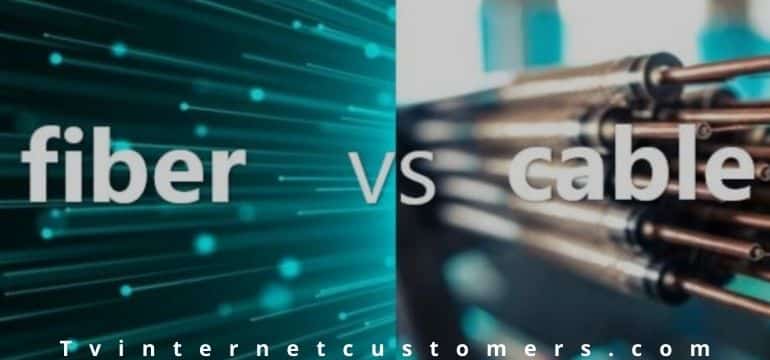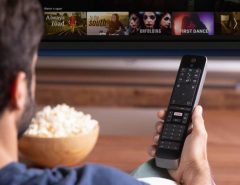Times are changing fast and so are the needs of people. For instance, what was once thought of as luxury is now being considered a necessity. The internet is one example of that. People are now relying more on the internet than ever before. But it’s not just the people, businesses too need the internet to run their operations smoothly. Today, it’s safe to say that the world can’t function without this timeless invention.
Staying connected is no longer a simple endeavor. You will be choosing not only between the providers but also the technology that powers the internet. Fiber and cable are two options that immediately come to mind when it comes to selecting an internet connection. Hence, it’s common for people to debate about fiber vs cable internet.
Table of Contents
An Overview of Fiber vs Cable Internet
Before discussing the difference between fiber vs cable internet, it is important to understand what both technologies are. Let’s start with fiber optics. They are thin strands of glass that carry pulses of light. The light can carry the information that you need to send far away. Optical cables contain several strands that are used to transfer optical signals over a long distance. Of course, this is just one of their many uses. This tech is also used in mechanical engineering and medical photography.
Now that you know about fiber optics, it’s time to answer the question: what is cable internet? It is a type of internet connection that uses the cable TV infrastructure to allow people to go online. Cables deliver better performance than wireless media when it comes to transferring data. This is one of the reasons why copper wire cables are so widely used across the world. The cables are made up of copper wires that have different types and models. And they have their own advantages and disadvantages.
How Does Fiber Optic and Cable Internet Work?
It’s important to discuss how both technologies work to give you a clearer picture of fiber optic internet vs cable. When it comes to fiber optic, a device is used to convert the light beam into electrical signals. These signals are easy for computers to process and read. But what are those devices? They are the transmitter and the receiver. The former transforms the electronic pulses into light pulses so they can pass through the optical fiber cable. Whereas the latter decodes light pulses into a digital signal. You should also know that radio frequencies do not have any effect on optical fiber channels. These channels transfer a large amount of data securely and at high speeds in the presence of electromagnetic interference.
As for the cable internet, it will need two things to work; one is the modem, and the other is a coaxial cable. This cable will run from your modem to the CMTS or Cable Modem Termination System that is housed in your ISP. Simply put, the cable internet will work when the coaxial cable is used to connect your modem with the CMTS.
Pros and Cons of Fiber Optic and Cable Internet
Both fiber and cable internet have their own set of pros and cons. Let’s have a look at them:
Fiber Optic
Pros
- Fast Speeds (up to 3 Gbps)
- More reliability
- Symmetrical speeds
Cons
- Lack of plan variety
- Limited availability
Cable Internet
Pros
- Range of speeds
- Easily available
- Bundle options
Cons
- Upload speeds are not impressive
- Network becomes congested
The Fiber Optic vs Cable Internet Speed Comparison
This is one of the favorite topics for the people who like to weigh in on the debate regarding these two technologies. When it comes to fiber optic vs cable internet speed, the former is a clear winner. Fiber optic delivers fast and consistent data speeds even during peak hours when there are a lot of people using the internet.
The cable internet doesn’t offer much speed. The slow cable internet speed is because the copper cable infrastructure offers limited bandwidth. Such connections provide users with asymmetrical speeds which means that the download speeds are greater than the upload speed.
However, cable connections are not slow, slow! They too offer decent speeds. In fact, you will be surprised that some ISPs provide up to 1 Gbps speed which is great. For example, the Cox Gigablast package. But generally, they are not as fast as fiber optic. Here’s a table that will make this difference vivid.
| Internet Service Provider | Fiber Optic | Cable Internet |
| Cox | 1000 Mbps | 10 – 940 Mbps |
| Mediacom | 1000 Mbps | 60 – 1000 Mbps |
| SuddenLink | 100 – 1000 Mbps | 100 – 1000 Mbps |
| Spectrum | 25 – 10,000 Mbps | 100 – 940 Mbps |
| Windstream | 1000 Mbps | 200 – 1000 Mbps |
The Cost of Fiber & Cable Connection
Since fiber optics is cheaper as compared to copper, you can expect the installation of fiber cable internet to cost less. However, optical amplifiers and detectors are a little bit on the expensive side. The price of fiber and cable internet depends on speed, contract time, and data capacity. Usually, fiber optic internet costs more than cable internet. Here are some of the ISPs and the range of amounts they charge for both types of connections.
Note: The prices mentioned below are subject to change.
| Internet Service Provider | Fiber Optic Price | Cable Internet Price |
| Cox | $29 – $99.99 | $29 – $99.99 |
| Optimum | $45 – $80 | $40 – $65 |
| SuddenLink | $35 – $75 | $35 – $75 |
| Xfinity | $25 – $67 | $29.99 – $299.99 |
Conclusion
Fiber optics and cable are both popular types of internet connection. Cable is widely available while fiber optic is only available in limited areas or states. To conclude the fiber vs cable internet debate, both are great options but if you prefer speed over everything else, the former is the best option for you. You can take advantage of the high speed to do your tasks much quicker. For instance, the Cox bill pay process won’t take much time if you do it online. However, if you seek an affordable connection, you can go with cable internet.





